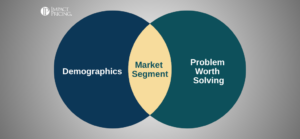When you’re having a sales conversation, at what point do you start talking about the price? Of course, the answer is “it depends”. It depends on the type of sales/buyer journey, the type of product you sell, the familiarity of your market with your competitors, and more.
However, my recommended rule of thumb is this: reveal the price after value is communicated AND understood. In some cases, this can happen simultaneously – but in most cases, the value should be emphasized before a price is given.
Now you will have noticed that in a B2C context, the price of a product is shown immediately, almost all of the time. In many of these instances, the customer already knows the value. Imagine you’re looking for a new pair of Levi’s – you already know the brand, the quality. You then decide the price is worth that value you believe you’re receiving.
We know price is often a signal of quality. In many of these B2C scenarios, customers will use the price to tell them about the quality of a product. Since quality is one part of value, you could use the price as a signal of value. Here, customers determine value simultaneously when they see the price.
When it comes to selling cars, almost no one pays the list price – it’s always a negotiated deal. In this situation, the salesperson doesn’t just quote your best price. An astute salesperson will try to figure out what the value of the car is to you (i.e., what they think you’ll be willing to pay), and then negotiate based on that.
What about seeing a price long before we know the value? One example is real estate. Buyers tend to set a price range, and make it clear they only want to look at houses within that range. This can be without necessarily knowing the value of a house above, below, or within their range.
This same thinking applies to B2B pricing as well. If you sell a product where the value is already known (for example, office supplies) it’s safe to reveal the price early on in the sales process.
A direct sales team is used in many B2B scenarios. The most important role for them is to communicate the value of the product to a buyer. I’ll say it again: the most important role of a salesperson is to communicate the value of a product, to a buyer. In most cases, they need to learn the needs of the buyers, and figure out how to best communicate the value. This is no easy job.
If you agree, and you agree that a price should only be communicated after value is understood (as much as possible), then the rational conclusion is for salespeople to listen to buyers, determine the level of fit, and then communicate value to the buyers. Then – and only then – can they communicate the price.
Unfortunately, some salespeople lead with the price. I’ve had the unpleasant experience of seeing this in action. Ugh. When this happens, it either scares the customer away, or we have a price that’s too low. If you lead with the price and it doesn’t scare the customer away, this implies we didn’t need a salesperson in the first place.
My advice: think about how your customers learn about the value of your product. When in the buyer journey do they see the value? Then, do your best to make sure the price is communicated either after or during the communication of value.















